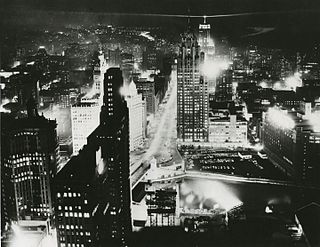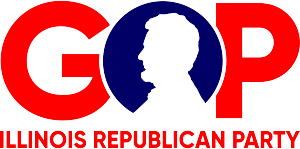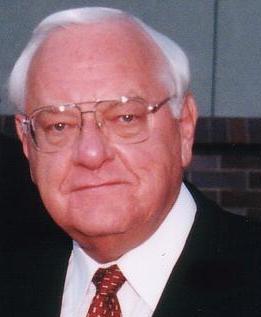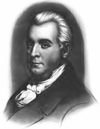
William Henry Bissell was the 11th Governor of the U.S. state of Illinois from 1857 until his death. He was one of the first successful Republican Party candidates in the U.S., winning the election of 1856 just two years after the founding of his party. In addition to being the first Republican governor of Illinois, he was also the first Catholic and also the first to die in office.

The Illinois General Assembly (IGA) is the bicameral legislature of the U.S. state of Illinois and comprises the Illinois House of Representatives and the Illinois Senate. The General Assembly was created by the first state constitution adopted in 1818. The State Senate has 59 members while the House has 118 members, all elected from single-member districts. A Senate district is formed by combining two adjacent House districts. The current General Assembly is Illinois's 100th. The General Assembly meets in the Illinois State Capitol in Springfield, Illinois. Its session laws are generally adopted by majority vote in both houses, and upon gaining the assent of the Governor of Illinois. They are published in the official Laws of Illinois.

The Elections for the United States House of Representatives on November 7, 2000 coincided with the election of George W. Bush as President. The Republican Party narrowly lost seats to the Democratic Party, reducing their majority slightly to just three seats.

The Illinois gubernatorial election of 2006 occurred on November 7, 2006. The Governor of Illinois, Democrat Rod Blagojevich, won re-election for a four-year term scheduled to have ended on January 10, 2011. However, Blagojevich was impeached and convicted in 2009. Many observers expected the race to be close, especially considering the polling, which has shown Governor Blagojevich had a high disapproval rating. However, the Republicans had fared poorly in elections since 2002 due to scandals involving prior Governor George Ryan, and the increasingly unpopular presidency of George W. Bush.

The 1956 Democratic National Convention nominated former Governor Adlai Stevenson of Illinois for President and Senator Estes Kefauver of Tennessee for Vice President. It was held in the International Amphitheatre on the South Side of Chicago, Illinois August 13–August 17, 1956. Unsuccessful candidates for the presidential nomination included Governor W. Averell Harriman of New York, Senator Lyndon B. Johnson of Texas, and Senator Stuart Symington of Missouri.

The Illinois Republican Party is the state-level affiliate of the Republican Party in Illinois. Since May 17, 2014, it has been chaired by Tim Schneider. The party is one of two legally established, statewide political parties in Illinois, the other being the Democratic Party.

The 1952 Democratic presidential primaries were the selection process by which voters of the Democratic Party chose its nominee for President of the United States in the 1952 U.S. presidential election. Although the popular vote proved conclusive, the 1952 Democratic National Convention held from July 21 to July 26, 1952, in Chicago, Illinois, was forced to go multiballot.

The 2002 Illinois gubernatorial election pitted Congressman Rod Blagojevich against Illinois Attorney General Jim Ryan. Rod Blagojevich won 52% to 45%, marking the first time a Democrat was elected governor of Illinois since 1972.

The 2010 Illinois gubernatorial election took place on November 2, 2010. Incumbent Democratic Governor Pat Quinn sought and was elected to a full term in office. Quinn was elected as the Democratic nominee, the Illinois Green Party nominee was attorney and 2006 nominee Rich Whitney, the Republican nominee was State Senator Bill Brady, the Libertarian Party nominee was Lex Green, and Scott Lee Cohen ran as an independent. Governor Quinn won election to a full term in a very close race, beating Senator Brady by only about 32,000 votes, despite Brady winning in 98 of 102 Illinois counties.

The 1996 United States Senate election in Illinois took place on November 5, 1996. Incumbent Democratic U.S. Senator Paul Simon opted to retire rather than seek a third term in the United States Senate. In the Democratic primary, United States Congressman Dick Durbin emerged victorious, while State Representative Al Salvi won the Republican primary. Though the election was initially anticipated to be close, Durbin ended up defeating Salvi by a comfortable double-digit margin of victory, allowing him to win what would be the first of several terms in the Senate.

The 1998 Illinois gubernatorial election resulted in Republican Secretary of State George Ryan defeating Democratic Congressman Glenn Poshard.

The Illinois gubernatorial election of 1834 was the fifth quadrennial election for this office. U.S. Representative Joseph Duncan was elected by a majority of the voters. He defeated former Lt. Governor William Kinney and former state treasurer Robert K. McLaughlin. Kinney had run in the election before as well. This was the only election of a Whig Governor in Illinois history.

The Illinois gubernatorial election of 1856 was the eleventh election for this office. Democratic governor Joel Aldrich Matteson did not seek re-election. Former Democratic Congressman William Henry Bissell was nominated by the newly formed Republican Party at the Bloomington Convention. Former Whig Mayor of Chicago Buckner S. Morris was nominated on the Know-Nothing Party ticket. This was the first election of a Republican governor in Illinois history. At this time in Illinois history the Lieutenant Governor was elected on a separate ballot from the governor. This would remain the case until the adoption of the 1970 constitution.

The Illinois gubernatorial election of 1860 was the twelfth election for this office. Republican governor William Henry Bissell died early in his term, and incumbern governor John Wood did not seek re-election. Former Democratic Congressman and former Clerk of the U.S. House James C. Allen was the Democratic nominee. A Number of third-party candidates ran as well; none received over one percent of the vote. At this time in Illinois history the Lieutenant Governor was elected on a separate ballot from the governor. This would remain the case until the adoption of the 1970 constitution.

The 2014 Illinois gubernatorial election was held on November 4, 2014, to elect the Governor and Lieutenant Governor of Illinois, concurrently with the election to Illinois' Class II U.S. Senate seat, as well as other elections to the United States Senate in other states and elections to the United States House of Representatives and various state and local elections.

The 1896 United States presidential election in New York took place on November 3, 1896. All contemporary 45 states were part of the 1896 United States presidential election. New York voters chose 36 electors to the Electoral College, which selected the president and vice president.

The 1884 United States presidential election in New York took place on November 4, 1884. All contemporary 38 states were part of the 1884 United States presidential election. New York voters chose 36 electors to the Electoral College, which selected the president and vice president.

A general election was held in the U.S. state of Illinois on November 4, 2014. All of Illinois' executive officers were up for election as well as a United States Senate seat, and all of Illinois' eighteen seats in the United States House of Representatives. Primary elections were held on March 18, 2014.

The 1860 United States presidential election in Kentucky took place on November 6, 1860, as part of the 1860 United States presidential election. Kentucky voters chose twelve representatives, or electors, to the Electoral College, who voted for president and vice president.
















